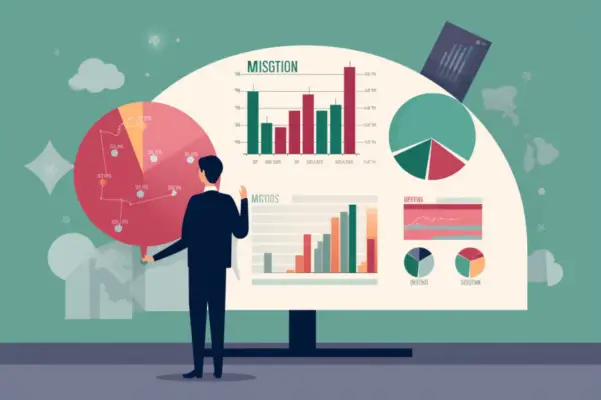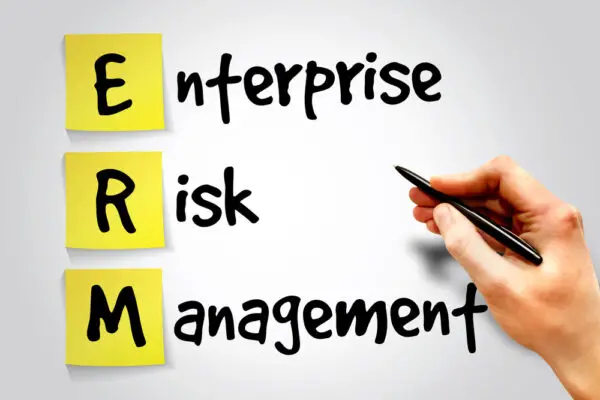In today’s volatile financial landscape, businesses have to be well-armed with proper tools to navigate any potential risks or threats they might face successfully.
The best practices for financial Key Risk Indicators (KRIs) are:
- Align KRIs with business objectives: KRIs should be aligned with the financial institution’s overall business objectives to ensure they measure the risks most relevant to achieving those objectives. (source: AuditBoard)
- Use a KRI framework: A well-defined KRI framework is essential for effectively utilizing financial KRIs. This framework should identify the most critical risks, define the relevant KRIs, and establish thresholds for acceptable levels of risk. (source: Risk Publishing)
- Monitor KRIs in real-time: KRIs should be monitored to identify and address potential risks as quickly as possible. (source: Pirani)
- Use a combination of leading and lagging indicators: Leading indicators can help predict future risks, while lagging indicators can help identify risks that have already occurred. Combining both can provide a more comprehensive view of potential risks. (source: TechTarget)
- Ensure data accuracy: KRIs are only effective if the underlying data is accurate and reliable. Financial institutions should have robust data management processes to ensure data accuracy. (source: Risk.net)
- Involve key stakeholders: Key stakeholders, such as risk managers, business leaders, and board members, should be involved in the development and monitoring of KRIs to ensure that they are aligned with overall business objectives. (source: AuditBoard)
One such powerful tool is the implementation of Financial Key Risk Indicators (KRIs). These strategic metrics offer invaluable insight into the financial health of a business, enabling entrepreneurs and financiers to respond to risks promptly and efficiently.
This piece takes an in-depth look into understanding KRIs, their role in mitigating financial risks, and the importance of incorporating them into a company’s financial system.
The narrative further unfolds ways to improve and innovate these indicators continuously. Real-world case studies prove how effectively employed KRIs can spur remarkable growth and financial stability.
Understanding Financial Key Risk Indicators
In a world dictated by finances, it becomes essential for businesses to keep a finger on the pulse, ensuring they thrive through numerous challenges.
One key method this is achieved is through understanding and employing Financial Key Risk Indicators (KRI). What are these critical metrics, and why do they hold such a weighty significance for your enterprise?
Much like a navigational compass carving out the path through an uncertain forest, Financial KRI offers businesses a roadmap through the financial landscape’s unanticipated or unexpected risks.
These are quantifiable measurements used to monitor the potential risk factors that could negatively impact a company’s financial state. Businesses can mitigate risks and boost profits by monitoring indicators.
The importance of Financial KRI’s for a business can not be overstated as they offer pivotal insights to keep the enterprise on track of success.
They drive operational improvements, serve as early warning systems, and enlighten companies about their capital adequacy.
Through recognizing potential pitfalls, businesses can foster resilience and augment strategic decision-making—an imperative element in keeping a business robust and ready to face future financial climates.
Imagine running through a hailstorm with a blindfold. You will likely sustain heavy losses from the pelting hail before reaching your destination.
However, if you knew where the hail was falling the hardest, your risk of harm diminishes significantly. This analogy succinctly outlines the essence of Financial KRI’s. It’s about knowing where potential risks lie and employing strategies to mitigate them.
It might seem intimidating to implement Financial KRI’s. Still, in today’s competitive market, understanding these key indicators is tantamount to understanding the future. When accurately tracked, monitored, and analyzed, risks are both predicted and mitigated, ultimately driving forward the bottom line.
One pivotal consideration in selecting KRI’s is to ensure they are tailored to a business’s unique risk profile. This is achieved by regularly reassessing KRIs in the context of a volatile market to ensure they accurately reflect the risks faced by the business.
If you want your ship to navigate the turbulent business world, understanding and monitoring Financial KRIs can act as its well-designed and reliable compass.
The significance of such indicators only increases in an evolving economy. Businesses that innovate and adapt are those that mainstay and often dominate the market.
This is achieved by recognizing potential threats, illustrating a trajectory towards success, and guiding informed decision-making by tapping into the powerful insights offered by Financial KRI.

Implementing Financial Key Risk Indicators
Smart Implementation of Financial Key Risk Indicators for a Robust Monetary Helmsmanship
Implementing financial Key Risk Indicators (KRIs) demands the right blend of strategy, execution prowess, and agility. It’s about recognizing the signals in your data before they become full-blown storm clouds.
It’s a pivotal part of the entrepreneurial success story and an essential tool that savvy business leaders cannot afford to undervalue.
To effectively implement Financial KRI’s, business organizations must accurately categorize the key risk indicators. This simplifies the process of focusing on those specific indicators that genuinely impact the journey towards fiscal soundness.
Does the KRI reflect credit, operational, market, or liquidity risks? Be meticulous!
While implementing Financial KRI’s, consistency holds the key. Any inconsistent application across the organization can distort the data collected, leading to misleading results.
As we know, distorted data is worse in the business arena than having no data. It’s akin to a sailor holding a flawed compass in a storm.
Effective use of technology is another critical factor here. Financial KRI’s are not a mere bundle of numbers; they are powerful insights that can predict adverse situations and offer the opportunity to change course.
Using advanced analytics tools and algorithms to process these indicators can significantly enhance their predictive power, providing superior insights.
Another vital consideration is fostering a culture that values the importance of Financial KRIs within your organization. This isn’t just about hiring financial whizzes or having state-of-the-art technology.
It’s about nurturing an environment where every individual in the organization understands their role in impacting the potent financial numbers. When an entire team works in sync with the purpose of maintaining fiscal stability, the resilience of the organization’s financial landscape automatically amplifies.
Last but certainly not least, the dynamic nature of Financial KRI’s cannot be overstated. Remember, what worked as a key risk indicator last year might be obsolete this year.
As industries evolve, so too do the financial risks associated with them. It’s essential to keep abreast of these changes and adjust your KRI’s accordingly.
As any astute businessman would attest, implementing Financial KRIs isn’t as simple as plugging them into a corporate structure and hoping for beneficial outcomes.
It’s a strategic endeavour that demands relentless focus, unerring precision, and the ability to adapt to ever-changing market dynamics.
Implementing pragmatic financial practices can help your business avoid pitfalls and cultivate a strong monetary foundation.

Optimizing and Innovating Financial Key Risk Indicators
Leveraging the Continual Refinement and Innovation of Financial Key Risk Indicators
In a business world teeming with financial complexities, shrewd entrepreneurs recognize that Financial Key Risk Indicators (KRI’s) are the refined tools for financial durability.
Like the anatomy of the chameleon, primed to adapt swiftly to changing environments, enterprises must continuously calibrate their Financial KRIs to maintain robust financial health. The question arises: how can businesses continuously refine and innovate their use of Financial KRI’s?
Firstly, effective risk management necessitates the precise categorization of key risk indicators. By segregating KRIs into comprehensive, intuitive categories such as operational risk, market risk, credit risk, and others, organizations can fine-tune their focus, permitting a deeper understanding of each risk factor and enabling the creation of specific remediation strategies.
Bridging the gap between effective and exceptional risk management, a company-wide uniform application of KRI plays a crucial role.
Enterprises that maintain consistent application across all departments gain a synchronized perception of risk and unify their approach and response, fostering streamlined communication and greater financial agility.
As an impetus for progression, technology wields a transformative influence over Financial KRI metrics. By harnessing advanced analytical tools, businesses can restyle traditional risk management, augmenting the efficiency of prediction models and empowering firms to anticipate and react to various risk factors nationally.
From deploying Artificial Intelligence for predictive analytics to incorporating Blockchain for heightened transparency in risk evaluation, technology promises to remain an enduring ally in this endeavour.
Creating a culture that appreciates the importance of Financial KRI’s is another significant step. When employees across the hierarchy assimilate the significance of KRI’s, the methodology gets implanted in the company’s DNA. This integration fosters both financial resilience and a unified response to potential risks.
Finally, appreciating the dynamic nature of Financial KRI’s is vital. Such appreciation paves the way for a more strategic, forward-thinking attitude towards risk management.
It encourages companies to perceive KRIs as more than static tools, viewing them as a continuously evolving framework that should be adapted to the ever-changing landscapes of the market and economy.
Any enterprise, irrespective of industry or size, can harness the potential of continuous refinement and innovation of Financial KRI’s for sustained financial sturdiness.
Recognizing and effectively integrating these critical aspects, firms can strengthen their financial positions and surpass fluctuations in the commercial landscape.

Case Studies of Effective Financial Key Risk Indicator Usage
A strategy driven by focus, accuracy, and flexibility
Innovation is a key driver of success in any business. But it shouldn’t be limited to product development or service delivery – it should seep into every aspect of corporate operations, including risk management.
Harnessing the power of financial Key Risk Indicators (KRI) is an innovation-forward move. Here are a few tangible instances to illuminate this picture further.
Companies that have efficiently utilized KRI’s stand on a higher podium with an enhanced operational picture and a competitive edge.
For instance, retailing giant Amazon deploys financial KRI’s meticulously, adjusting for the dynamic nature of its market presence, thus, proving how flexibility in risk management extrapolates into a successful business model.
Similarly, multinational financial services conglomerate, J.P. Morgan, curates its financial KRI’s with accuracy, conforming to its unique risk profile and strict regulatory guidelines.
It couples this with cutting-edge analytics tools, effectively blending technology and tradition. Akin to a protective shield, it reinforces its business against any foreseeable threats.
Fintech startups like Lemonade and Robinhood have also set a new benchmark in using KRI’s. Not bound by the traditional processes, these companies have disrupted the risk management landscape by creating a new culture that values the power of KRI’s and uses them as a catalyst for future growth.
They target key risk categories, maintaining consistency across all their operations while adapting innovative strategies to achieve optimal results.
The pertinence of deploying financial KRI’s also extends to non-profit organizations. Take, for instance, the Gates Foundation.
Despite not operating for profit, they deploy KRI’s in a way that helps them preserve and grow their corpus fund, allowing them to maximize their philanthropic endeavours.
The strategy here is precision. The KRI’s set is tracked meticulously, ensuring capital adequacy and serving as an early warning system, should there be any potential financial adversity.
In conclusion, efficient utilization of financial Key Risk Indicators is an imperative business strategy, opening an avenue of possibilities, inspiring growth, competitiveness, and future-ready adaptability.
So, in this rapidly evolving business landscape, it’s about time we embraced KRIs not just as a risk management tool but as an integral part of the larger corporate strategy. After all, in the business world, forewarned is forearmed.

Conclusion
The dynamic nature of the financial terrain mandates businesses to stay ahead of the curve in risk management.
Failing to do so could have detrimental effects on their financial health. Financial Key Risk Indicators are a compass for navigating this terrain, with insights that enable efficient and prompt action.
Understanding how to choose relevant KRIs and incorporate them into financial systems becomes vital. More importantly, the courage to innovate, optimize, and learn from real-world instances of KRI usage marks the true landmark of financial stability.
Each business is a unique entity, its financial hazards differing in shape and magnitude; however, a well-orchestrated ballet of KRIs tailored to a company’s needs will undoubtedly catalyze its growth and prosperity.

Chris Ekai is a Risk Management expert with over 10 years of experience in the field. He has a Master’s(MSc) degree in Risk Management from University of Portsmouth and is a CPA and Finance professional. He currently works as a Content Manager at Risk Publishing, writing about Enterprise Risk Management, Business Continuity Management and Project Management.


